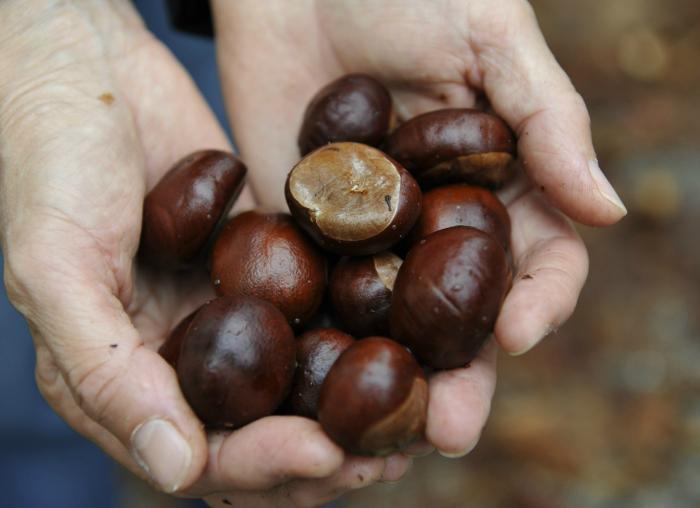
Late each autumn, the air of the Austro-Hungarian Imperial capital of Vienna became filled with an unmistakable aroma. It was the beginning of chestnut season, and roast chestnut sellers set up shop all over the city. And in the decades before World War I, many of Vienna’s chestnut roasters – perhaps half – were Slovenian.
According to Polona Šega, who studied the history of Slovenian chestnut sellers, most of them came from the regions of Dolenjska (Lower Carniola) and Kočevska, which were badly affected by the economic crisis of the late 19th century. Some were seasonal workers who took the train to Vienna every fall. For others, Vienna was merely a way station. Šega points out that they stayed in Vienna just to make enough money from chestnuts to buy a ticket to America, their Promised Land.
Until World War I, Slovenian chestnut sellers were a mainstay of Vienna street life. They were immediately recognizable by the musical cries they used to advertise their chestnuts and became an indispensable element of the Christmas season in the Imperial capital. But the annual turnover was high, primarily because of the difficult conditions; the hours were long, the competition was fierce, and there was little relief from the punishing winter weather.
Still, many chestnut sellers persevered. According to Šega, the term “chestnut seller” became synonymous with Slovenians to such a degree that a Vienna building designed by the Slovenian architect Jože Plečnik was even nicknamed the “Chestnut Roaster.” Before World War I, Slovenian chestnut sellers were also active in other Austro-Hungarian cities, including Trieste, Graz, Prague, and Budapest.
The Great War changed all this. After the conflict, new international borders sprung up and the number of Slovenian chestnut sellers working abroad declined dramatically. However, Ljubljana was still within reach, and the local chestnut roasting tradition continued in the Slovenian capital.
Today, the aroma of freshly roasted Chestnut still wafts through Ljubljana in the late autumn. However, many of the chestnut sellers are no longer Slovenian, but rather recent immigrants from other former Yugoslav republics. Just as the Slovenians of a century ago, these chestnut sellers brave the elements in the hope of a better tomorrow for themselves and their children.

































































